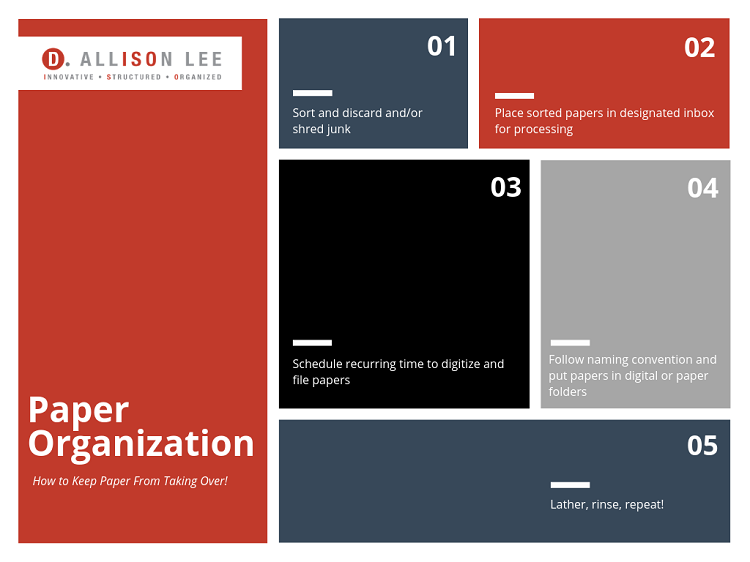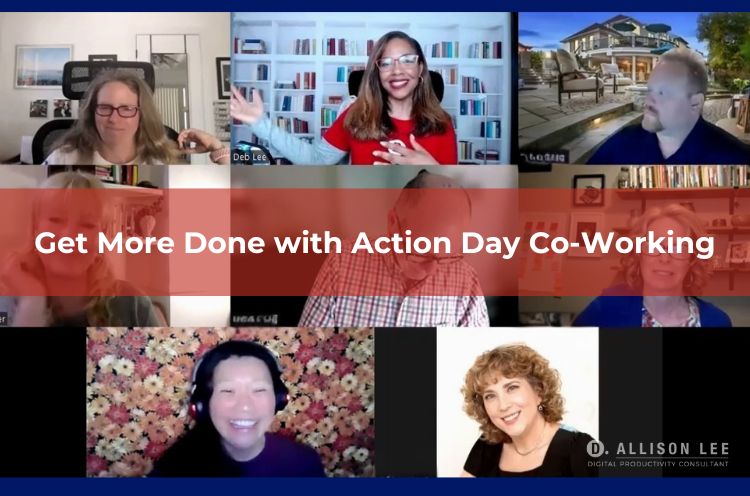Being productive when you don’t feel like it? Yeah, that’s tricky. You're not always going…

80 Percent of Resolutions Always Fail (But You Can Fix That!)
Have you been actively working your resolutions lately? Are they top of mind? Or, have your resolutions failed? Would you be surprised to learn that a majority of resolutions fade away within two to four months?
In a season of change, in a year of change, most people who embark on a journey of self-renewal can expect anything but. Research shows that about 80 percent of people who make resolutions on Jan. 1 fall off the wagon by Valentine’s Day.”
[Source: The New York Times ~ New Year, New You? Nice Try]
So, here we are. February has come to a close and if that stat holds true, most of us have already given up. Even if that is true, it helps to figure out the reasons why so we can actually do something about it and put resolutions in their proper place — front and center in our minds and actions.
Why Resolutions Fail
Resolutions fail because change is hard. We’ve probably spent a good number of years cultivating some not-so-good habits. Changing those well-practiced behaviors takes time. There are no overnight success stories. Okay, well, maybe there are a few but for most of us, change takes effort, time, commitment, determination, and probably a whole lot of positive self-talk.
But, there’s another reason why our resolutions fail. They fail because they’re usually not well thought out. Resolutions IMHO are a waste of time for three main reasons:
- They are often too broad
- There’s no success plan or map
- They’re often unrealistic
Here’s a quick example — Is it really possible to become a lean, mean productivity machine in one month — especially when you’ve spent many months or years doing just the opposite? Probably not.
For most of us, it’s just not realistic to make meaningful and sustainable change in 30 days especially if there’s no clear path to success. And, what exactly does “lean, mean productivity machine” mean? It’s a good goal gone bad because it isn’t specific enough, fails the reality check, and doesn’t include micro-goals.
Would you be surprised to learn that 80% of #resolutions fail by Valentine's Day? Good news: There are things you can do *right now* to refocus and achieve your goals. http://bit.ly/2Hf7MDn #goals #productivity Share on XSave this post to your “Productivity” or “Goals” board
80% of Resolutions Fail But You Can Fix That!
Alright, so the facts are what they are. We fall off the wagon more often than not and we put that on repeat every year. In short, our resolutions fail spectacularly. But, we can give ourselves a fighting chance just by changing our mindset a bit and making a few tweaks.
Whether you want to improve your own productivity or the productivity of your team, to start and end meetings on time, cull paper clutter pile-ups in your office, or some other goal, there are a few simple adjustments you can make right now to get — and stay — on the right track and actually reach that goal you’ve been aiming for.
You can:
Be a realistic goal-getter
Instead of making large, lofty resolutions, focus on specific goals. For example, “getting rid of paper clutter” might sound a bit daunting — especially if you think about all the piles of paper you might have in various places. So, set a goal to reduce the paper influx in one room, say a well-trafficked space in your office.
Doesn’t that feel better or at the very least seem just a little easier to manage? Instead of tackling your entire office, simply pick one area to start with. And, as you think about all the things you want to adjust (go ahead and do a brain dump), get as specific as you can and break your goal into smaller tasks or micro-goals.
Remember to be reasonable with yourself and think about how much time you (and your team) can realistically spend focusing on your new, shared goals.
To help you be a realistic goal-getter, you should be …
Be C.L.E.A.R. or S.M.A.R.T
The C.L.E.A.R. and S.M.A.R.T. action methods give you a solid framework for how you can manage and achieve your goals and stop your resolutions from failing. Because they’re easy to remember (as most acronyms are), they can propel you toward reaching specific milestones.
The C.L.E.A.R. method can be a game-changer for teams. C.L.E.A.R. goals are:
- Collaborative (team members work together)
- Limited (in both scope and length)
- Emotional (connected to employees’ passion and energy)
- Appreciable (broken down into smaller, more manageable steps)
- Refinable (clear but flexible based on changing scenarios)
The S.M.A.R.T. method can be used by individuals and groups. S.M.A.R.T. goals are:
- Specific (clear, simple, and unambiguous)
- Measurable (results can be tracked)
- Attainable (realistic and achievable)
- Relevant (meaningful, connected to company purpose and/or vision)
- Time-bound (designated starting and ending timeframes)
Depending on your situation, you might be able to use both methods. Just keep in mind that no matter which one you choose, be sure that everyone on your team (even your virtual mates) use it. Otherwise, things might become messy, unorganized, and unproductive pretty quickly.
Save this post to your “Productivity” or “Goals” board
Picking resolutions? Easy. Sticking with them. Not so much. [Fox & Friends First]
Create a success map
Another helpful way to stop your resolutions from failing is to figure out your end result even before you start working on your goals. What will success look like? How will you know when you’ve achieved certain milestones?
If getting rid of paper clutter is your goal, will all paper piles be banished forever never to return again? Or, will you have a particular process for collecting paper and organizing and digitizing it so that it doesn’t consume your workspace?
Be S.M.A.R.T. and pick the latter! Take a minute to map out the steps you need to take to achieve your goal. Of course, there are decisions to be made:
- What will you do with incoming paper?
- Where will they live until you can sift through, sort, digitize, and organize them?
- Will you apply this process to older documents or just to new ones?
- When and how much time will you need to work on organizing your documents?
Once you’ve nailed down your process, a flow chart or a written list of action steps can be a nice visual reminder of the things you need to do. Trust me, you’ll find this very helpful especially when you’re starting a new routine and for those days when things are a little more chaotic than usual.

Enlist some tech help
So, you wouldn’t be surprised if I suggested that you use technology to keep your resolutions from failing, would you? I suspect not. LOL There are actually many instances when a gadget or an app just fits the bill.
Let’s go back to my paper clutter example. If you plan to kick paper clutter to the curb, you’ll need a heavy-duty shredder and a scanner — and probably a mobile scanning app (like Scannable or Adobe Scan) for when you or your team members are out and about and need to digitize receipts, business cards, or other documents.
Learn about two more apps that can help you build good habits and achieve your goals!
Honestly, no matter what you’re hoping to achieve, there probably is an app that can help.
- Want to run more efficient meetings, try any number of Pomodoro timer apps like Focus To-Do: Pomodoro Timer & To Do List (for iOS and Android) or other time management apps like Team Meeting Timer (web or Android) or Timeular* (a gadget with an accompanying app).
- How about organizing and storing your business docs? Evernote (affiliate link), Dropbox, and Google Drive can come in handy.
- Gotta get your social media posts created and in order? WordSwag, Buffer, and Planoly are here for you!
- Need an easy way to schedule meetings? Doodle (affiliate link) and Calendly are two excellent choices. How about doing a virtual face-to-face with your clients or team members? Google Hangouts (GSuite affiliate link), Join.me, and Zoom can help.
See what I mean? There’s a vast array of apps that can be the glue that holds your workflows and business processes together. Have questions or not sure where to start? Just drop me a line or comment below.
Alright, so that might be a lot to process all at once. Save this post and come back to it later just to soak it all in AND choose your starting point. This year, don’t let your resolutions fail. Start small and create micro-goals, focus on a specific set of actions, be realistic and reasonable with yourself, use a system to help you stay on track, and let technology help with some of the heavy lifting.
Would you be surprised to learn that 80% of #resolutions fail by Valentine's Day? Good news: There are things you can do *right now* to refocus and achieve your goals. http://bit.ly/2Hf7MDn #goals #productivity Share on X
Save this post to your “Productivity” or “Goals” board
*Note: I was recently gifted Timeluar and am currently testing it out … not for meetings, though. More to come! Also, this post contains affiliate links. What does that mean? If you click on any of those links and make a purchase, I will get a small commission that will likely feed my growing love for coffee! ☕





I feel like I’ve finally found a good set of tools that work for me and aren’t crazy expensive. Your insightful posts have been very helpful!
That’s a great feeling when you finally find the tools that work for you! What tools are in your top 5, Janet?
Probably these:
1. Acuity Scheduling
2. Streak CRM
3. Buffer
4. Todoist
5. Google Calendar
Great roundup of tools, Janet. I use two of them. =)
Which two?
Buffer and Google Calendar. =)
I’m laughing about enlisting tech help, because my first thought was that I need to hire help for the technological aspects of my goals:) But also yes, using some tech tools can definitely make things easier, especially once we master them. I just used a new parking app today. It was a step outside the comfort zone, but I think I will find it very helpful as I travel around to clients!
No problem with outsourcing the heavy tech lifting, Seana. =D Each situation is unique, yes? And, we do have to account for the learning curve. Tell me more about the new parking app. Sounds like it might save you some time when you’re out and about traveling to see clients.
I am so much more successful with my business goals than with my personal goals for the new year. I have got to start putting myself first sometimes. Any suggestions?
Hey Janet – What have you done specifically to advance your business goals? I imagine there are some strategies you can apply to your personal goals. Of course, putting yourself at the top your to do list is a great first step! 🙂
You might also like using an app that motivates you each time you accomplish a personal goal. Apps like Strides and Streaks can help you visualize your progress and motivate you to stay on top of your quest to achieving those personal milestones. Think you might give one of them a try?
Deb,
You always provide so much interesting and useful content in your posts. I especially love all the tech tools as my clients seem to glom onto those more than anything else.
I think building in accountability with my goals is critical for me. If I tell someone or multiple people, I’m doing something I am WAY more likely to get done. Accountability buddies help in this regard too.
Hi Anne – I have to agree with you. Having an accountability partner can really help push us forward. When we have to report to someone about our progress (or lack of it), we tend to get things done! This works really well for me.
Would love to hear which tech tools you and your clients like using. Is there an app you think we should take a look at?
Deb, this was incredibly helpful both from a personal but also organisational POV! We’re a fledgling brand, so oftentimes, ‘resolutions’ and goals can get a bit overwhelming without the proper structure in place. I think the CLEAR and SMART methods were particularly useful for us! In terms of a success map, do you have maybe a nicely designed format / structure we can download to base ours off of? Just something to get small teams like us started!
So glad to hear that! When you start implementing either CLEAR or SMART, I’d love to hear how either one works for you.
Also, each team’s success map will be unique and based on business processes that are particular to the organization. The first step would be to map out the process step-by-step with your team and be sure to take their input into account. I say “the process,” but realistically, you’ll likely have multiple processes for your business. This blog post will help get you off on the right foot as you develop or refine your workflows.
Have you already created workflows or standard procedures for key business areas?
This year instead of making resolutions, I’ve experimented with setting an intention. My intention provides me with a useful framework or boundary for the decisions I’ve been making. So far it’s worked beautifully. Of course, that doesn’t necessarily help me with the nitty-gritty of how something I pursue gets accomplished. However, deciding what is important or valuable to do comes first, and my “intention” has been fantastic for that first part. Then I activate the tools and systems needed to move forward.
I love, love that you focus on intentions. Some people use words for the year that guide them no matter what they’re focusing on. Such a simple yet effective way to keep your values and intentions in the front of your mind. As for the nitty-gritty part, there’s always an app for that! 😉
Do you use a word for the year to keep your intentions front and center in your brain?
That’s a great question, Deb. I don’t use a word for my intention. Instead, when an opportunity arises to make a choice, a little “ding, ding, ding” goes off in my head. The need to make a decision is enough of a cue for me to activate my intention statement, which is, “I will say ‘yes’ to interesting opportunities without deliberation or doubt.” In turn, this also affords me the ability to say “no” with more ease too.
Love that nice balance between saying yes AND no intentionally, Linda. Thanks for sharing that. =)